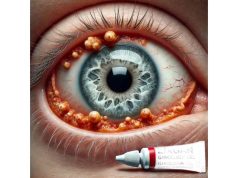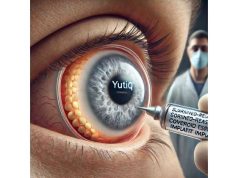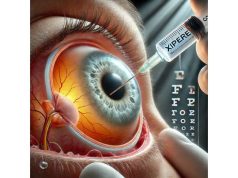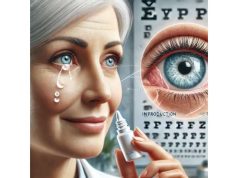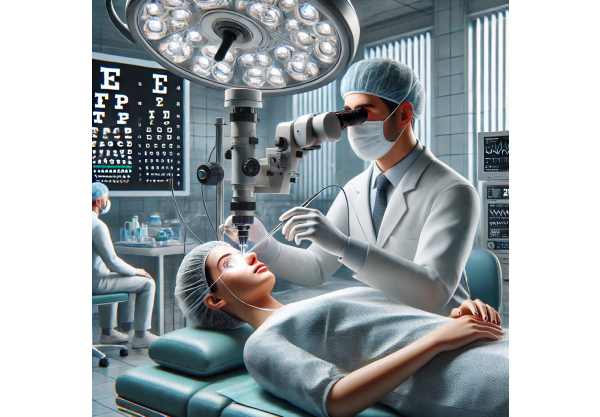
Functional lacrimal duct obstruction, a frequently overlooked yet impactful cause of excessive tearing (epiphora), can disrupt daily living and quality of life for millions. Unlike anatomical blockages, this condition arises when the lacrimal drainage system remains physically open but fails to function optimally, often due to subtle neuromuscular or inflammatory changes. Early recognition, accurate diagnosis, and a tailored approach to therapy are essential to prevent chronic discomfort, infection, and social distress. This comprehensive guide explores epidemiology, underlying mechanisms, non-surgical and surgical treatments, cutting-edge technologies, ongoing research, and expert advice for both patients and clinicians.
Table of Contents
- Understanding the Condition and Global Impact
- Medical and Conservative Treatment Options
- Interventional and Surgical Solutions
- Latest Technologies and Innovative Approaches
- Research Advances and Future Directions
- Frequently Asked Questions
- Disclaimer
Understanding the Condition and Global Impact
Functional lacrimal duct obstruction is defined by abnormal tear drainage despite no physical narrowing or complete anatomical block. This often confuses patients, as imaging and probing may appear normal, yet symptoms persist. Unlike primary acquired nasolacrimal duct obstruction (PANDO), which results from structural blockage, functional cases stem from impaired lacrimal pump function, subtle inflammatory changes, or age-related loss of tone.
Key Features and Causes
- The lacrimal drainage pathway includes the puncta (small eyelid openings), canaliculi, lacrimal sac, and nasolacrimal duct.
- Tears drain by both gravity and a “lacrimal pump” action triggered by eyelid blinking and the orbicularis oculi muscle.
- Dysfunction can arise from:
- Neuromuscular incoordination (e.g., age-related, facial nerve palsy)
- Chronic subclinical inflammation
- Mucosal changes due to aging, allergies, or mild infection
- Medication effects (antihistamines, psychiatric drugs)
- Idiopathic causes (no identifiable structural or functional abnormality)
Epidemiology and Demographics
- Estimated prevalence is 5–10% among adults with epiphora.
- More common in the elderly due to muscle weakening and age-related tissue changes.
- Slight female predominance, potentially due to hormonal and anatomical factors.
- Frequently underdiagnosed, leading to frustration and unnecessary surgeries.
Risk Factors
- Aging and loss of eyelid muscle tone.
- History of chronic allergies or sinus inflammation.
- Previous eyelid or nasal surgeries.
- Prolonged use of certain systemic medications.
- Neurological diseases affecting facial muscles.
Impact on Quality of Life
- Persistent tearing can impair vision, cause skin irritation, and lead to social embarrassment.
- Complications include recurrent conjunctivitis, superficial keratitis, and even dacryocystitis (infection of the lacrimal sac).
Diagnosis: A Clinical Challenge
- Careful examination: Slit-lamp assessment, tear meniscus measurement, and dye disappearance tests.
- Syringing and probing: Rule out anatomical obstruction.
- Imaging (dacryoscintigraphy, dacryocystography): Assess function vs. physical block.
- Functional testing (fluorescein dye disappearance): Determines clearance speed, crucial for diagnosis.
Practical Advice
- If you experience chronic tearing but normal exam results, ask your doctor about functional obstruction.
- Keep a diary of symptoms, triggers, and medications for more precise diagnosis.
- Be proactive: Early specialist referral is key when first-line measures fail.
Medical and Conservative Treatment Options
Functional lacrimal duct obstruction is often amenable to non-surgical interventions, particularly in early or mild cases.
Initial Conservative Management
- Artificial tears: Help maintain surface lubrication and wash away allergens or irritants.
- Warm compresses: Applied twice daily to promote glandular and ductal function.
- Eyelid hygiene: Regular cleaning with diluted baby shampoo or commercial lid wipes to reduce inflammation.
- Environmental modifications: Use humidifiers, avoid wind exposure, and manage allergens at home.
Pharmacological Therapies
- Topical corticosteroids: Short courses may reduce mucosal inflammation in select patients.
- Antihistamine or mast cell stabilizer drops: For allergy-driven symptoms.
- Lubricating gels or ointments: Useful at night to reduce morning epiphora.
- Cholinergic agents: Rarely, topical medications like pilocarpine may improve muscle tone (off-label, specialist supervision only).
- Address underlying systemic medications: Collaborate with primary care to adjust drugs that may worsen symptoms.
Massage and Blinking Exercises
- Lacrimal sac massage: Gentle downward pressure on the inner canthus can enhance tear drainage in select cases.
- Conscious blinking exercises: For those with incomplete blinking (often from prolonged screen use), structured blinking routines can retrain muscle function and support tear flow.
Allergy and Sinus Management
- Addressing chronic rhinitis or sinusitis with appropriate medications can sometimes relieve functional block by reducing inflammation and improving overall drainage.
Patient Education and Lifestyle Tips
- Avoid eye rubbing, which can exacerbate irritation and inflammation.
- Wear sunglasses outdoors to minimize wind and dust exposure.
- Take regular screen breaks and perform “full” blinks to prevent tear stasis.
When to Escalate Care
- Persistent symptoms after 4–8 weeks of conservative therapy warrant further specialist evaluation.
- Early involvement of an oculoplastic or lacrimal specialist can streamline diagnosis and prevent chronic complications.
Interventional and Surgical Solutions
When conservative management fails or symptoms significantly impact daily function, interventional procedures become the next step.
Minimally Invasive Office Procedures
- Lacrimal duct irrigation (“flushing”): Gently clears out minor debris or mucus plugs; sometimes therapeutic even if no major block is found.
- Punctal dilation and plug removal: For cases with punctal stenosis or excessive plugs.
- Temporary punctal plugs: Occasionally used to trial symptom improvement, especially if dry eye is also a concern.
Advanced Interventions
- Balloon dacryoplasty: A tiny balloon is inserted via the canaliculus and gently inflated to stretch functional narrowing or improve pump function. Quick, safe, and office-based.
- Intubation with silicone stents: Soft tubes are threaded through the drainage system to maintain patency and encourage normal tear flow. These remain in place for weeks to months and are well-tolerated.
- Botulinum toxin (Botox) injections: Rarely, targeted injections to modulate overactive orbicularis muscle function or relax dysfunctional components of the drainage system.
Surgical Procedures
- Dacryocystorhinostomy (DCR): Traditional gold standard for nasolacrimal duct block, but in functional cases, “mini-DCR” or external DCR may be reserved for severe, refractory symptoms with secondary anatomical changes.
- Endonasal DCR: A minimally invasive alternative using nasal endoscopy to create a new drainage channel.
- Lester Jones tube placement: Used only in extreme cases where normal anatomy cannot be restored.
Surgical Advances and Outcomes
- Newer “functional DCR” techniques focus on preserving mucosal integrity and lacrimal pump action, with better long-term symptom relief.
- Success rates vary but can exceed 80% when patient selection is appropriate and coexisting conditions (e.g., dry eye, eyelid laxity) are addressed.
Post-Procedure Care
- Short course of topical antibiotics and steroids.
- Nasal saline sprays for endonasal cases.
- Gentle eyelid care and avoidance of nose-blowing for at least a week.
Rehabilitation and Follow-Up
- Scheduled follow-up visits are critical for stent or tube removal and to ensure proper healing.
- Most patients return to normal activities within days, with gradual improvement in tearing.
Practical Guidance
- Ask your surgeon about the pros and cons of each procedure and expected recovery time.
- Adhere strictly to post-op instructions to minimize risk of infection or recurrence.
Latest Technologies and Innovative Approaches
Advances in technology are rapidly transforming the management of functional lacrimal duct obstruction, making diagnosis more precise and treatments less invasive.
Enhanced Diagnostics
- Dynamic dacryoscintigraphy: Real-time imaging of tear flow, pinpointing subtle functional delays.
- Anterior segment optical coherence tomography (AS-OCT): High-resolution scans of the lacrimal puncta and canaliculi, revealing microstructural changes.
- Smartphone-based tear flow analysis: Digital imaging apps allow remote monitoring and patient-driven tear function assessment.
Minimally Invasive Innovations
- Microendoscopy: Miniaturized cameras enable direct visualization of the drainage pathway, identifying mucosal changes or minor obstructions missed by standard imaging.
- Bioresorbable stents: Next-generation, dissolving implants maintain patency temporarily, eliminating the need for removal procedures.
- Drug-eluting punctal plugs: Deliver anti-inflammatory or lubricating agents directly to the site of dysfunction.
Artificial Intelligence (AI) and Digital Tools
- AI-powered triage: Algorithms analyze patient symptoms and video clips to guide referral urgency and likely diagnosis.
- Teleophthalmology platforms: Secure video consults and remote symptom tracking support rural and underserved patients.
Emerging Therapies
- Topical biologics: Agents targeting inflammatory mediators show promise for select cases with chronic mucosal inflammation.
- Gene therapy (in development): Preclinical studies are exploring correction of rare congenital causes of functional obstruction.
Patient Empowerment Through Technology
- Use smartphone reminders for blinking exercises and medication schedules.
- Leverage digital tracking apps to monitor symptom frequency and share data with your care team.
Tips for Patients Seeking Innovation
- Inquire about clinical trials or new devices if standard therapies have failed.
- Always confirm that any device or medication is FDA-approved or under supervised investigation.
Research Advances and Future Directions
The field of lacrimal duct dysfunction is evolving, with multiple research efforts underway to enhance outcomes and patient experience.
Active Clinical Trials
- Novel stent materials: Comparing long-term outcomes of traditional silicone versus bioresorbable stents.
- AI-assisted diagnosis: Multicenter trials of digital image analysis to streamline referral and reduce diagnostic delays.
- Biologic therapies: Testing topical and injectable agents to reverse mucosal dysfunction and restore pump action.
Emerging Areas of Interest
- Regenerative medicine: Use of stem cells to rejuvenate the lacrimal drainage mucosa.
- Electrostimulation devices: Small wearable patches that stimulate eyelid muscles to enhance tear pumping.
- Personalized medicine: Genetic profiling to predict response to therapy and risk of recurrence.
Future Trends
- Broader integration of telemedicine for triage, follow-up, and rehabilitation support.
- Expansion of remote monitoring tools for real-time patient engagement.
- Development of point-of-care diagnostics for primary care settings.
Staying Informed
- Follow updates from major ophthalmology societies and academic centers.
- Join patient support groups for shared experiences and access to new research.
- Participate in patient registries to support ongoing discovery.
Practical Advice for Patients and Clinicians
- Ask your provider about clinical trial opportunities that may be suitable for your condition.
- Stay informed and engaged—research is rapidly moving toward more targeted, comfortable, and convenient solutions.
Frequently Asked Questions
What causes functional lacrimal duct obstruction?
Functional lacrimal duct obstruction is typically caused by impaired eyelid muscle function, mild inflammation, or subtle mucosal changes rather than a physical block. It often appears in older adults and can be triggered by aging, chronic allergies, or certain medications.
How is functional lacrimal duct obstruction diagnosed?
Diagnosis is based on clinical symptoms, normal imaging, and functional testing like the fluorescein dye disappearance test. Syringing and probing help rule out anatomical blockages, while advanced imaging may assess subtle changes.
What are non-surgical treatments for functional lacrimal duct obstruction?
Non-surgical options include warm compresses, eyelid hygiene, blinking exercises, topical anti-inflammatory medications, and allergy management. Early intervention and lifestyle modifications are often effective for mild cases.
When is surgery considered for functional lacrimal duct obstruction?
Surgery is considered if conservative treatments fail and tearing significantly affects quality of life. Options include balloon dacryoplasty, silicone stent intubation, or advanced procedures like endonasal dacryocystorhinostomy.
Are there innovative treatments available for this condition?
Yes, new approaches include bioresorbable stents, drug-eluting punctal plugs, microendoscopy, and digital monitoring tools. Research is ongoing in biologics, regenerative medicine, and AI-powered diagnosis.
Can this condition recur after treatment?
Recurrence is possible, especially if underlying factors like eyelid laxity or chronic allergies persist. Ongoing follow-up and addressing contributing factors are crucial for long-term success.
Disclaimer
This guide is for educational purposes only and should not be considered a substitute for professional medical advice. Always consult an ophthalmologist or eye care provider regarding symptoms, diagnosis, or treatment options for lacrimal duct obstruction.
If you found this article helpful, please share it with others on Facebook, X (formerly Twitter), or any platform you prefer. By sharing, you help support our mission to provide reliable, up-to-date health information for everyone.


